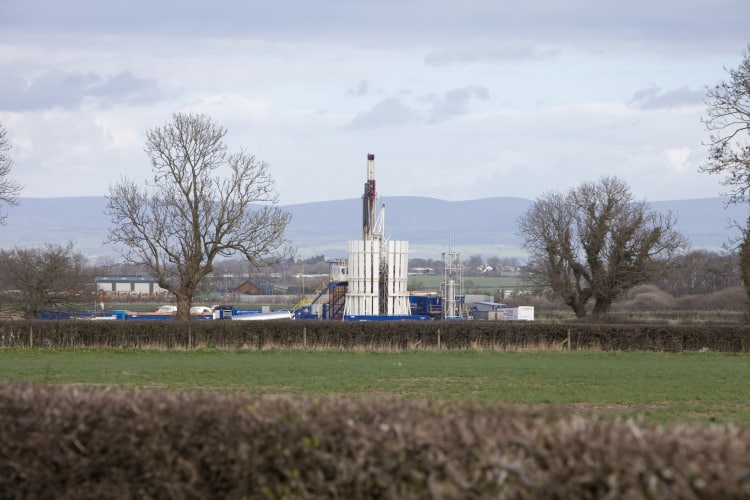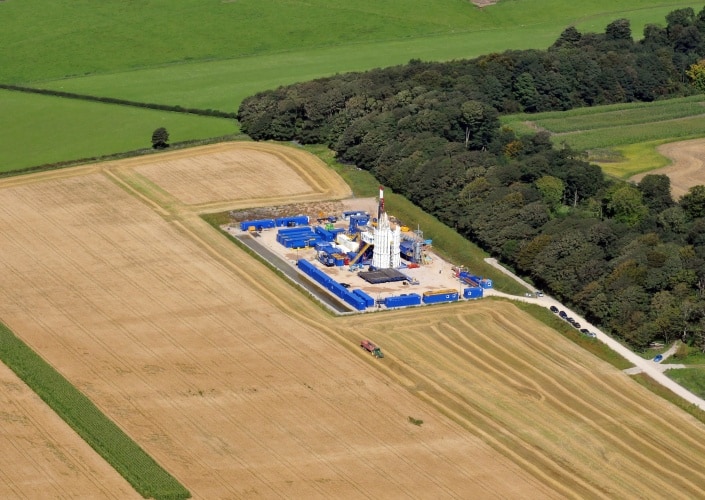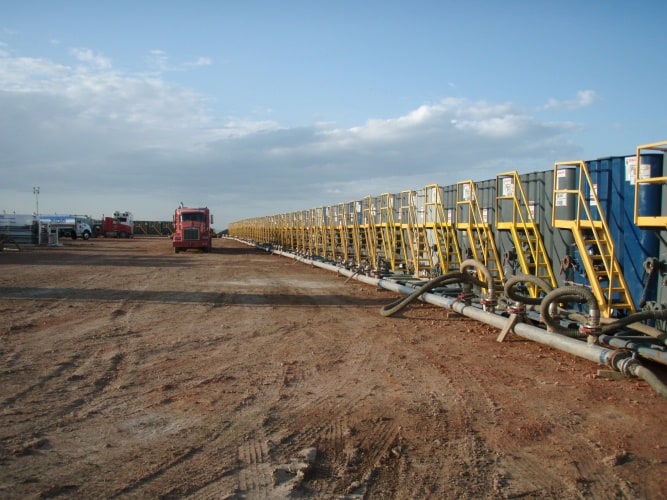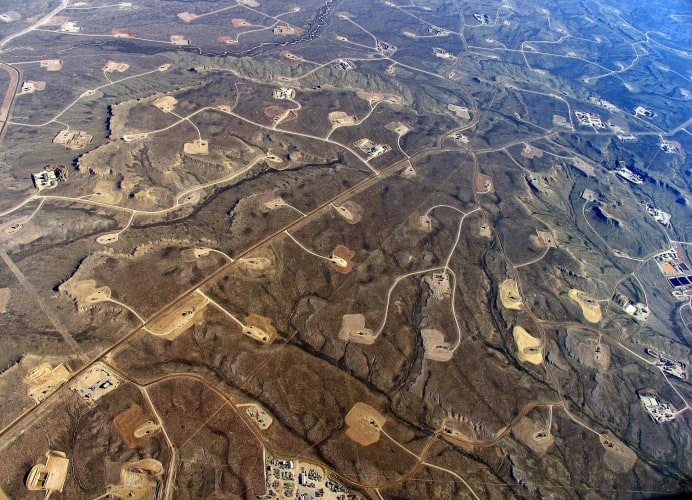
Fracking is one of the most controversial areas of engineering to emerge for years. The method of hydraulically fracturing underground shale rock with large amounts of water in order to release trapped oil and gas has transformed the energy landscape of the US. Now proponents want to open the UK to a similar new generation of onshore fossil-fuel operations, arguing it will improve the country’s energy security and help reduce carbon emissions by enabling a shift from coal to gas generation. Opponents argue fracking poses a significant environmental threat to water supplies, the countryside and the wider climate by deepening our use of fossil fuels when we should be moving to renewables.
For our latest reader Q&A, we put your questions on fracking to a panel of experts including:
• Francis Egan, CEO of Cuadrilla Resources, one of the firms carrying out exploratory fracking in the UK;
• Laura Grant, policy adviser at the Chartered Institution of Water and Environmental Management, which has warned against pursuing fracking too quickly but also that some of the negative impacts have been overplayed;
• Dr Anthony Ingraffea, professor of engineering at Cornell University in the US, who has been researching fracking since the 1970s — including work for oil and gas companies — but is now an outspoken critic of the industry;and
• The oil & gas team of engineering consultancy Mott MacDonald, which has been advising industry on the challenges in developing a UK shale gas sector.

What measures can be taken to prevent pollutants from the fracking fluid or shale minerals contaminating aquifers or returning to the surface with the shale gas?
Laura Grant: The main risk of contamination is not from the hydraulic fracturing process but rather from the drilling process near to the surface/aquifer. The Environment Agency is taking a precautionary approach and not allowing drilling to take place within our principal aquifers for drinking water and anywhere where there may be an unacceptable impact on groundwater.
Mott MacDonald: Most useable groundwater is found within the first few hundred metres below the surface, where a suitable rock formation (the aquifer) is located. The shale-rock formations containing viable shale gas are generally located two or three kilometres below the surface in the UK, so there won’t be a direct interface.
It is highly unlikely that there would be permeable formations in hydraulic connection between the shale-gas formation and overlying aquifers due to the overburden pressure experienced by the geology and the distances between shale gas formations and aquifers. If there were, then the viability of the shale-gas field for exploitation is probably going to be very poor.
Fractures or fault zones could be a more likely route for movement of pollutants. However, if these are present then they could decrease the effectiveness of the hydraulic fracturing process. This is something that would be evaluated fully during the testing phase.
“It is therefore in the interest of the shale-gas developer to have a comprehensive understanding of all the major geological features before
they commence any shale-gas productionMott MacDonald
The borehole would have to be designed and constructed to be completely sealed so there was no potential for pollutants to move through the annulus. This is important as, if pollutants could move through the annulus then so could the shale gas. This would be commercially as well as technically undesirable, meaning that the integrity of the borehole would be a primary design objective.
Francis Egan: Cuadrilla’s fracking fluid will comprise non-hazardous substances and its composition must be reviewed and approved in advance by the Environment Agency. Mains water and sand will make up 99.95 per cent of our fracturing fluid. Around 0.04 per cent of the fracturing fluid is a friction reducer called polyacrylamide, which is commonly used in facial cream and contact lenses. This is added to the water to minimise pressure loss due to friction with the pipe as the water flows more than one mile underground to the shale rock.

Our exploration wells at Preston New Road and Roseacre Wood in Lancashire will feature multiple liners consisting of steel well casings and cement layers. The sections of the wells that are nearest the surface will have more containment layers to provide greater protection between the wellbore and the adjacent rock. The presence of multiple barriers is designed to prevent gas or liquid leaking from wells to the surrounding rock or surface.
The flowback fluid will enter an enclosed separation system at the surface, with any solids removed and the fluid quality tested. It will then be used, along with mains water, sand and friction reducer to fracture the next section of the well. By implementing this approach, the total amount of water used and the amount of waste removed from the site will both be reduced.
”As far as we know there have only been a very small number of problems caused by well failures
Francis Egan
Flowback water that is not used will be stored in steel tanks, prior to being removed and treated at a wastewater plant licensed by the Environment Agency. This is classified as a non-hazardous waste but, because of the presence of low levels of naturally occurring radioactive material (NORM), such as that found in granite rocks, is treated at an EA-approved plant.
Tony Ingraffea: No measure or measures can prevent but
some measures can decrease the probability and extent of contamination. There is no completely safe industry. One can take measures to decrease the occurrence of leaking wells and of surface spills, but it is not humanly possible to make such problems impossible.
How can you determine what natural fractures exist in the rock and how can you guarantee the fracking fluid or gas won’t travel through these?
MM: This will involve significant mapping of the geology between the surface and the shale-gas formations using various geophysical techniques, supplemented by direct data gathering using boreholes and the testing of these boreholes. The whole purpose of this work is to establish the viability of the target formations for shale gas production, and this viability will depend to an extent on the degree of naturally occurring fracturing/faulting in the area of interest. It is therefore in the interest of the shale-gas developer to have a comprehensive understanding of all the major geological features, including fracture/fault zones, before they commence any shale-gas production.
FE: The propagation of fractures during well stimulation will be evaluated from data collected from an extensive microseismic monitoring array network up to 80 separate monitoring stations around each of our exploration well sites. During hydraulic fracturing activities, a sub-set providing real-time data will be assessed. This assessment will form part of the decision-making tools used to adjust the hydraulic fracturing operations, including duration and intensity of injection, to ensure that fractures remain within the shale formation. The shale itself begins approximately 1.5km below the surface and we have completed a detailed 3D seismic survey over the area where we will be fracturing. The results of this survey show that there is negligible risk of fracking fluid or gas reaching aquifer or the surface.
How can you monitor the wells and fracking sites underground to detect any leakages?
LG: During fracturing operations microseismic events can be very accurately monitored with sensitive seismometers and can be compiled to map the creation of fractures deep underground. Government licensing requires seismic monitoring to assess likely faults and thus potential impact on well integrity using a traffic-light monitoring system. If a seismic event is determined to be large enough by the monitoring system then operations will cease. The well can then be repaired.
TI: Underground monitoring is ‘impossible’ for both gas and liquids because there are no methods commonly used for so doing. A well would have to be taken out of production and wireline-inspected frequently for possible leakage using an array of possible high-tech methods. This is never required by regulation. Most gas detection is via observations at the wellhead, but no detection there does not mean that there is no gas leakage and propagation below ground level.
How many examples from the US are there of contamination of aquifers due to well failure? Is it correct to say there have been many other examples of aquifer contamination due to the failure of open pits but that these would not be allowed in the UK?
FE: As far as we know, there have only been a very small number of problems caused by well failures, which are not unique to shale reservoirs or indeed directly caused by hydraulic fractures, when you consider the hundreds of thousands of wells that have been drilled onshore in the US. If there had been many examples of aquifer contamination, then the US hydraulic fracturing success story would not exist.
The use of open pits to store flow back water at surface in the US is fast disappearing. This situation would never arise in the UK as it is not permitted and any flowback water will be stored in fully enclosed steel tanks, prior to being removed and treated at an Environment Agency-licensed wastewater plant.
TI: No accurate count has ever been made nationwide. There have been some efforts to count, by both regulatory agencies and environmental entities, at the state level. For example, the Pennsylvania Department of Environmental Protection has determined that ‘oil and gas operations have damaged Pennsylvania water supplies 209 times since the end of 2007’.
Counting is hampered by the fact that nobody is doing the counting because records are sometimes not kept, or not well kept. Some incidences are ‘hidden’ from the public through non-disclosure arrangements between operators and victims. Sometimes there is purposeful obfuscation of the situation by disingenuous definitions of ‘well failure’ and ‘contamination’. For example, some in the oil/gas industry argue that a well has failed only when all its barriers have failed and there is publicly proven water well contamination. Others argue that methane is not a ‘contaminant’. Be careful in reading between the lines!
LG: The UK is developing a far more robust regulatory regime with regard to shale gas. Open pits would certainly not be allowed. Another failure in the US has been from the lack of baseline information to establish if the contamination was naturally occurring or as a result of the drilling or fracturing process.
There is very little information available on the problems and solutions of blocking up the gap between the vertical pipe and the bored hole. Is it possible to prevent fluids at different layers from migrating and for how long?
FE: Yes this is a standard feature of well design with multiple barriers typically in place to prevent fluid migration. These typically comprise cement in the annulus between pipe and well bore and also the use of external casing packers to provide a mechanical barrier to upward flow.
What responsibility would fracking companies have if environmental issues emerge after an operation has finished?
FE: Like other companies operating in the UK, Cuadrilla will be responsible for all its sites during the exploration and commercial production phases. This responsibility will remain, many years later, once the land is fully restored to its former condition.
Shale gas produces only 60 per cent of the CO2 produced by burning an energy-equivalent amount of coal
Tony Ingraffea
How big will well sites be and what surrounding infrastructure will be needed? How can we limit the impact on local communities, particularly from noisy trucks frequently passing through quiet, narrow roads?
FE: A well site would be approximately two hectares in area, around the size of two football pitches. As we plan to drill up to four horizontal wells at both the Roseacre and Preston New Road sites in Lancashire, this will reduce the surface impact. This technique also allows us to locate drill sites away from environmentally, visually or historically sensitive areas while still getting access to the right part of the rock formation deep underground.
Our assessments have highlighted that over the lifetime of both projects the numbers of vehicle movements that will be generated will vary, with peak movements related to periods when equipment is being brought to or removed from to the sites. These peaks generally only last for a few days (e.g. a week) before traffic movements reduce to a lower level during operations such as drilling, hydraulic fracturing and flow testing. Traffic movements required for shale sites in fact compare very favourably with other forms of onshore energy such as wind or solar.
TI: Shale-gas development [in the US] is spatially intense, using clustered, multi-well pads, on a spacing of about one mile by two miles. Each pad will have eight or more wells, and need five to 10 acres (two to four hectares). Ancillary infrastructure includes gathering pipelines, compressor stations, processing (refining) units, storage units, tank farms, transmission pipelines.

How can shale gas help reduce global CO2 emissions when it increases the total available amount of fossil fuels, reduces their price and thus increases their use, as we have seen with rising coal use in Europe as a result of the US shale-gas boom?
MM: At the point of combustion, natural gas has the lowest greenhouse gas emission factor of any fossil fuel. This means that if gas displaces lignite, coal or heavy fuel for electricity generation there will be a carbon saving. Carbon emissions in the US have decreased by 8.6 per cent since 2005 due to the switch from coal to shale gas. This has been partly offset by increased emissions from coal burnt in Europe, as displaced US coal has accentuated weak global coal prices.
However, overall assuming that shale gas can be developed in a way that mitigates the greenhouse gas emissions across the supply chain, then substitution of shale gas for coal in places such as China, India and South Africa could reduce greenhouse gas emissions. Gas could play a similar role in the transport sector where compressed natural gas can substitute gasoline and diesel.
TI: Shale gas produces only 60 per cent of the CO2 produced by burning an energy-equivalent amount of coal. But that fact does not automatically mean that overall CO2 emissions are decreased by substituting methane for coal for one particular use: generating electricity. There are many interwoven and complicating factors and dependencies, but the simplest correct observation is that we must decrease all CO2-equivalent emissions over the next two decades or so to have a hope of not reaching even a 1.5 degree C warming by 2050. That includes unburned methane emissions as well as CO2 itself from burning it. Our calculations indicate that methane for all end uses exacerbates, not helps, the climate change problem.
FE: The fact that US coal is now finding a home in Europe, (particularly in the UK) is we believe, evidence of how much we need to develop shale gas. If European countries with shale-gas reserves can successfully extract gas on a commercial basis, then we will have less need to use coal to generate electricity. We should also bear in mind that two-thirds of the gas we use is for powering our homes’ central heating systems, firing our cookers and fuelling UK industry. Therefore, we will be heavily reliant on gas for the foreseeable future. The question is, do we import more and more gas from foreign countries, or do we look closer to home? For instance, it’s estimated that 1,300 trillion cubic feet of gas is contained within shale-rock formations in northern England. If we can extract just 10 per cent of this gas, we would meet the UK’s current gas demand for more than 40 years.




April 1886: the Brunkebergs tunnel
First ever example of a ground source heat pump?